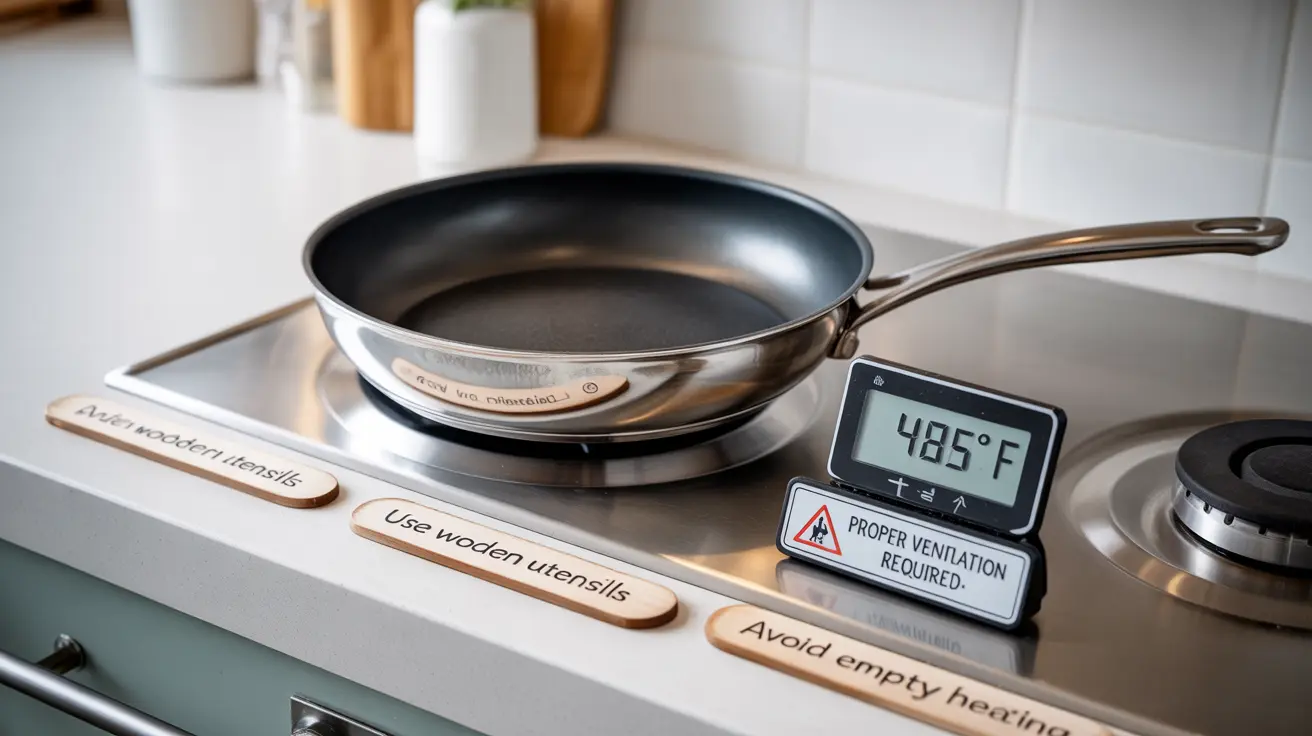Understanding the potential health risks associated with Teflon pans and nonstick cookware has become increasingly important for health-conscious consumers. While these kitchen staples offer convenience and easy cleaning, concerns about their safety have sparked important discussions about proper usage and potential alternatives.
This comprehensive guide examines the safety considerations of Teflon cookware, including the risks of overheating, proper usage guidelines, and alternative options for your kitchen.
Understanding Teflon and Its Components
Teflon is a brand name for polytetrafluoroethylene (PTFE), a synthetic coating used to create nonstick surfaces. Modern Teflon cookware has evolved significantly since its introduction, particularly regarding the chemicals used in its manufacturing process.
While older Teflon products contained PFOA (perfluorooctanoic acid), a concerning chemical linked to various health issues, manufacturers have largely phased out this compound since 2013. However, other fluoropolymers are still used in production, warranting careful consideration of usage practices.
The Risks of Overheating Teflon Cookware
When Teflon pans are heated to extremely high temperatures (typically above 500°F or 260°C), they can release potentially harmful fumes. These fumes can cause a condition known as polymer fume fever, or "Teflon flu."
Signs and Symptoms of Polymer Fume Fever
- Temporary flu-like symptoms
- Chest tightness
- Mild cough
- Fever and chills
- Headache
- Body aches
These symptoms typically appear 4-10 hours after exposure and usually resolve within 24-48 hours. While rarely severe, they indicate significant overheating of the cookware and should be taken seriously.
Safe Usage Guidelines for Nonstick Cookware
Following proper usage guidelines can significantly reduce the risks associated with Teflon cookware:
- Never preheat empty pans
- Keep cooking temperatures below 500°F (260°C)
- Use adequate ventilation while cooking
- Replace pans showing signs of wear or peeling
- Avoid metal utensils that can scratch the coating
Safer Alternatives to Traditional Nonstick Pans
For those concerned about Teflon's safety, several alternatives offer excellent nonstick properties:
Natural Nonstick Options
- Cast iron cookware
- Ceramic-coated pans
- Stainless steel
- Carbon steel
- Glass cookware
Each alternative has its own benefits and considerations regarding maintenance, durability, and cooking performance.
Frequently Asked Questions
What are the symptoms of Teflon flu caused by overheating nonstick pans?
Teflon flu symptoms typically include temporary flu-like symptoms such as fever, chills, headache, and chest tightness. These symptoms usually appear within 4-10 hours of exposure to overheated pan fumes and resolve within 24-48 hours.
How can I safely use Teflon pans to avoid toxic fumes and health risks?
To safely use Teflon pans, never heat them above 500°F (260°C), avoid preheating empty pans, ensure proper ventilation, and replace damaged cookware. Use wooden or silicone utensils to prevent scratching the coating.
Is Teflon cookware toxic and what happens if it overheats?
Modern Teflon cookware isn't toxic under normal use, but when overheated, it can release fumes that cause temporary flu-like symptoms. The coating can also begin to break down at high temperatures, potentially releasing particles into food.
What is the difference between PFOA and the chemicals currently used in Teflon cookware?
PFOA, a chemical previously used in Teflon manufacturing, was phased out by 2013 due to health concerns. Current Teflon products use different fluoropolymers that are considered safer, though they still require proper use to avoid potential risks.
Are there safer alternatives to Teflon nonstick pans for high-heat cooking?
Yes, safer alternatives for high-heat cooking include cast iron, carbon steel, and stainless steel cookware. These materials can withstand higher temperatures without releasing harmful fumes and often become naturally nonstick with proper seasoning and care.




